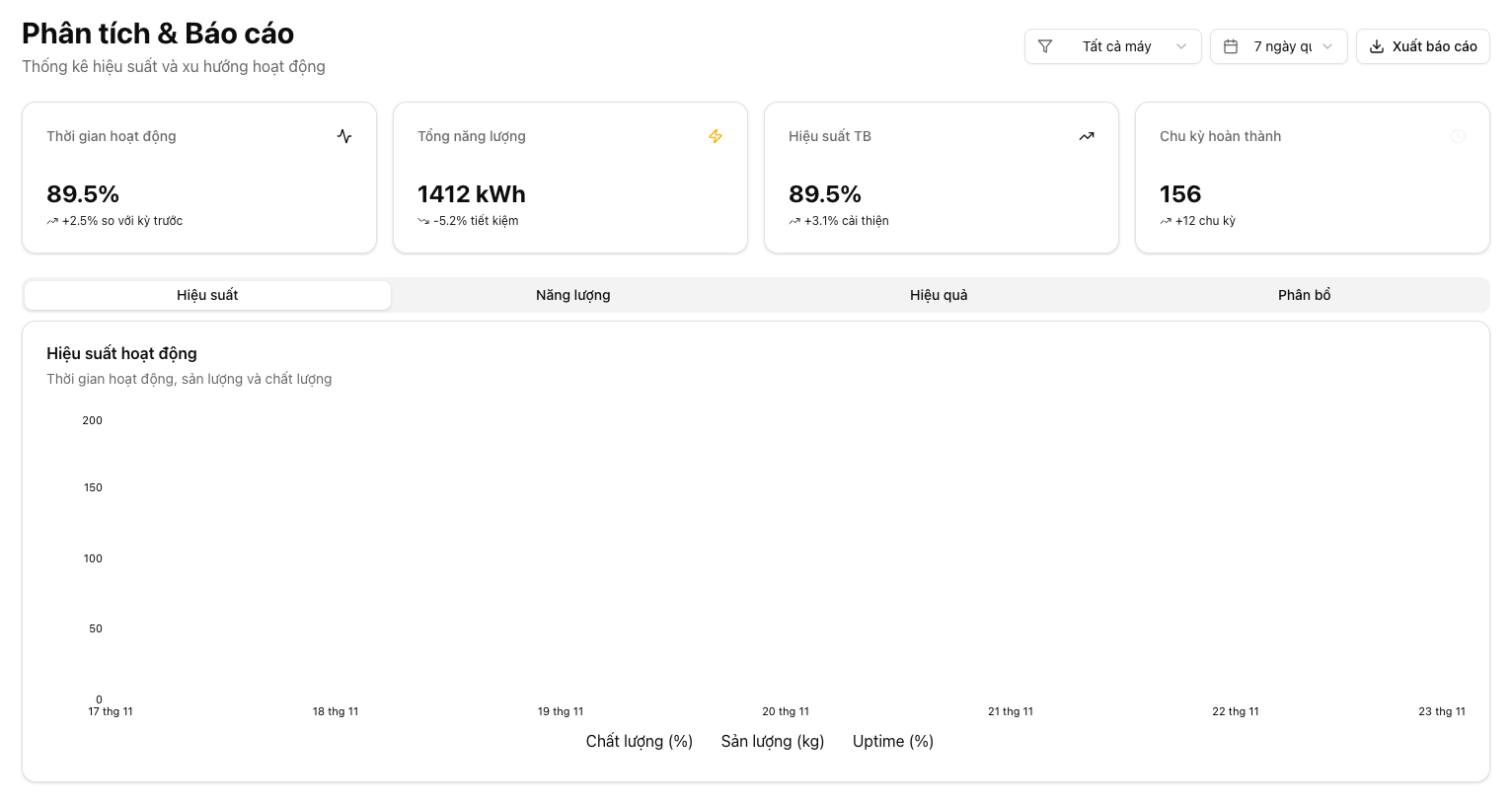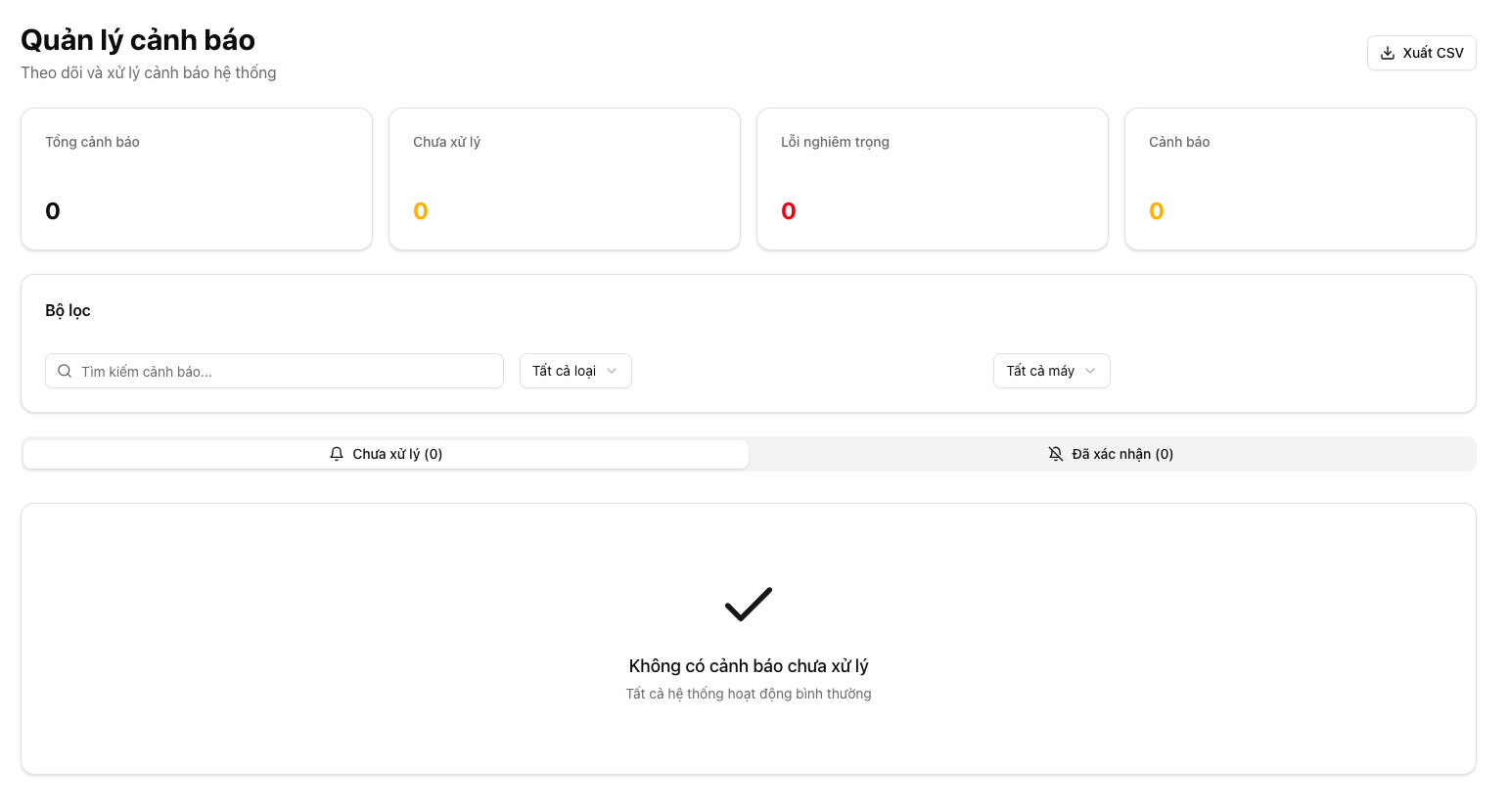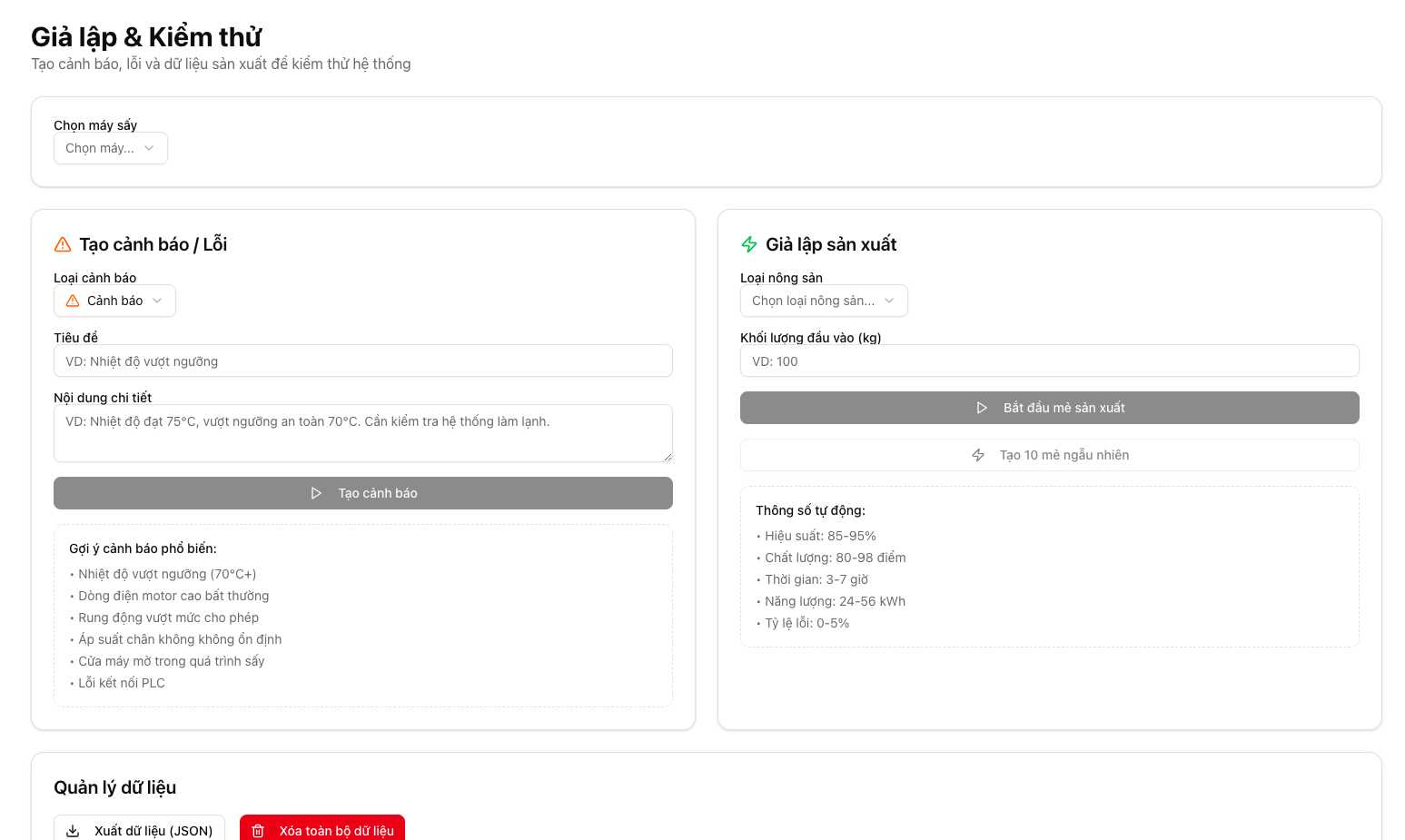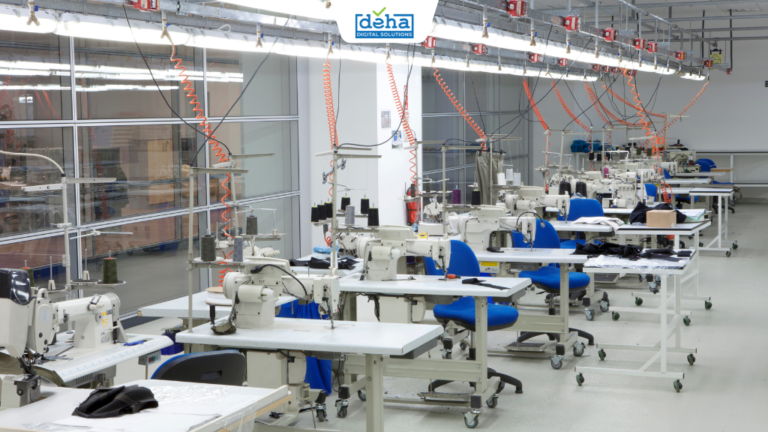In agricultural product processing (fruits, grains, seeds, vegetables, herbs…), the drying stage directly affects:
Final product quality
Loss rate
Color, crispness, and flavor
Commercial value
Export potential
Energy costs
However, most factories today still use semi-manual drying methods, which carry significant risks. An intelligent drying monitoring and control system helps automate, standardize, and optimize the entire process.
Challenges in managing drying systems
Inaccurate control of temperature and humidity
Dryers are often operated based on workers’ perception → prone to errors. Even a few degrees or 5–10% difference in humidity can noticeably affect quality.Customer concerns
Inconsistent quality between batches: batch 1 looks perfect, batch 2 too dark, batch 3 over-dried… due to inability to control drying requirements for each type of raw material.
High energy waste
Dryers consume large amounts of electricity/fuel.
Lack of automatic optimization → high energy costs, increased production expenses.
Dependence on worker skill
Workers must:Monitor the machine
Rotate trays
Check moisture levels based on experience
Adjust temperature manually → labor-intensive and unstable results.
No data for traceability & improvement
Drying time, stage temperature, humidity charts, and alerts are often not recorded → impossible to identify the cause if the product is damaged.
No early warning for dryer malfunctions
Overheating, excess humidity, fan failures, or sensor errors can ruin the entire batch if not detected in time, causing significant losses.
Non-compliance with export requirements
Exported agricultural products (EU, US, Japan…) require drying logs to prove:
Products are free from mold due to under-drying
Proper heat treatment
Final moisture level meets standards
Without data → audits fail.
Overall Solution
Dashboard

Manage Dryers

Monitor Productivity

Analyze and Report

Alert Management

Simulation and Testing






